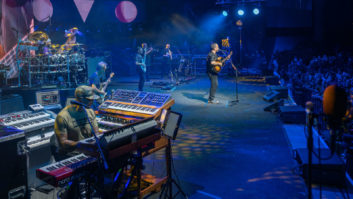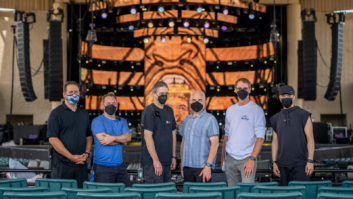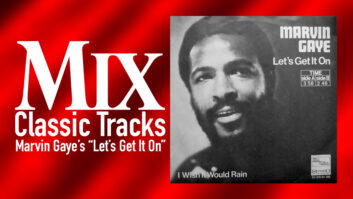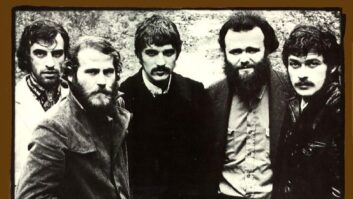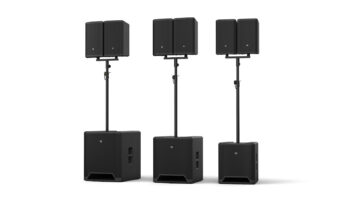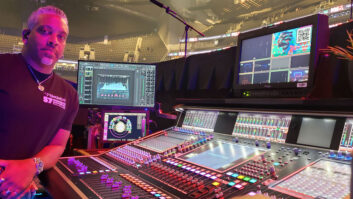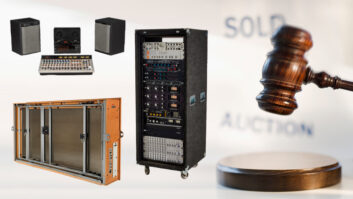Stefan Lessard, bassist for the Dave Matthews Band, stands
foot-forward on his Fonz Foot Wedge during a performance
at New York’s Citi Field Stadium. Photo: Clive Young
By Clive Young.

The Dave Matthews Band knows how to put on a show, and it’s always clear when they’re locked into the moment on stage—just take bassist Stefan Lessard. He’ll stand back playing loose-limbed, deep in a groove, but at more aggressive moments, he might have one foot forward on that small, black ramp thing. At other times, he might stand on it like he’s riding a skateboard and…. Hey, wait a minute. What the heck is that thing anyway?
To find out, I turned to the band’s longtime monitor engineer, Ian Kuhn, who gave me the scoop. Turns out it’s something you’ve never heard of before: the Fonz Foot Wedge.
Used nightly by Lessard, the wedge has a low profile, but is hard to miss once it catches your eye—it’s the tiny triangular box with no grill, built around a Clark Synthesis Tactile Sound Transducer usually found on the bottom of a drum stool to help drummers feel a bit more thump. The custom item was the result of a special request that came after recording the band’s 2009 album, Big Whiskey and the GrooGrux King.
The Fonz Foot Wedge. Photo by Jeff Child.
“When they were recording the album, he enjoyed sitting on the drum throne and having just the kick drum sent to him through it for monitoring purposes,” says Kuhn.

“Last year, when we started the tour, he said, ‘Man, it would be cool to have a box with one of these that I could put my foot on during the show.’ My partner Greg [Botimer, the band’s monitor tech] and I built this ultra low-profile wedge with a bass shaker and a little power amplifier in it. I feed it power, kick drum and bass guitar, and it’s its own mix. We roll it off about 400 Hz, but it’s got a really fast response, so when the kick drum happens, you feel it instantly and then it goes away. It provides energy through the stage for the area around it, too, so it helps keep things quieter up there by exciting your ears through bone conduction instead of sound.”
